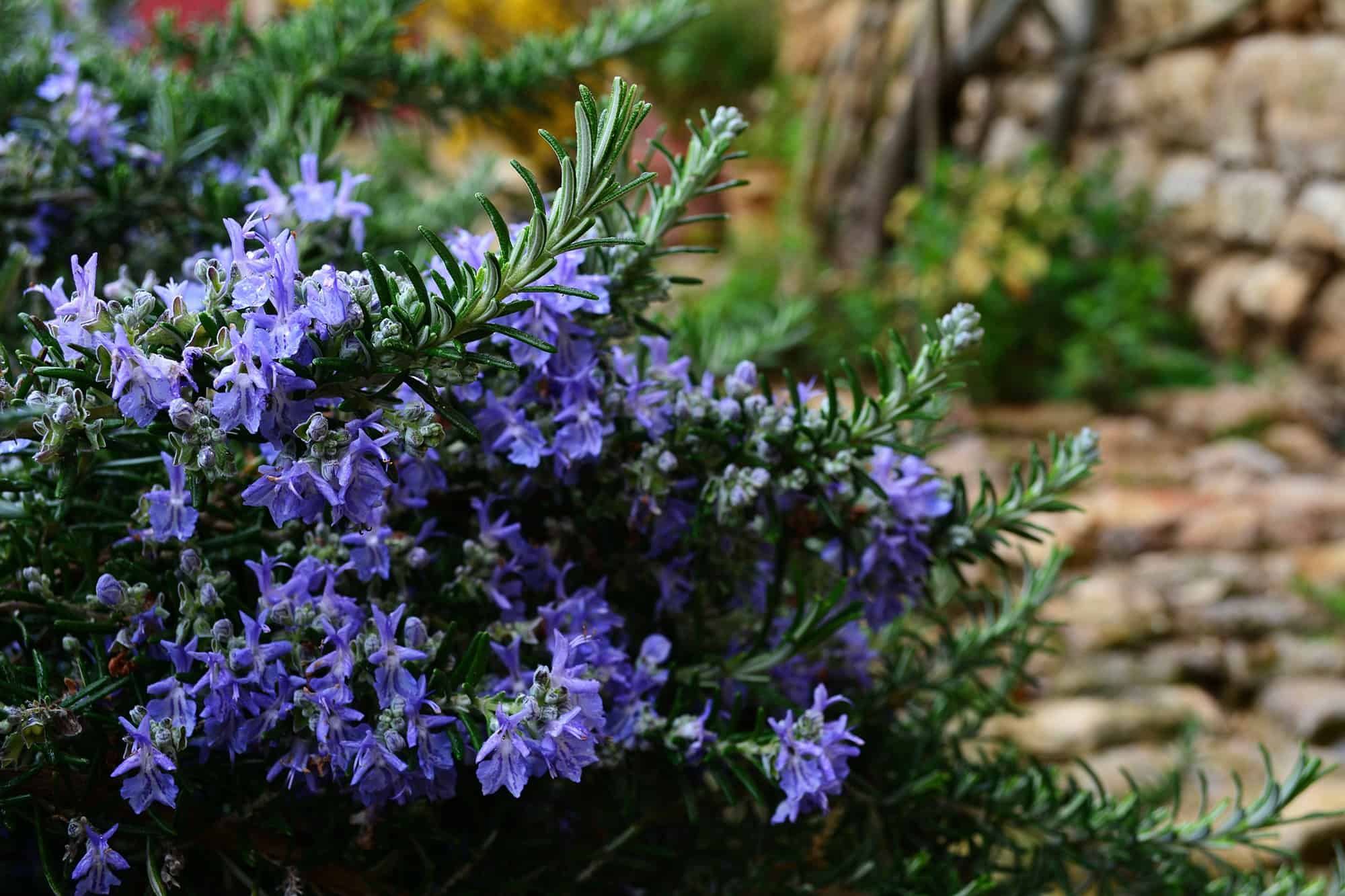The rosemary plant in bloom is a captivating sight, with its delicate purple flowers and aromatic foliage. Its unique characteristics and versatility make it a beloved herb in gardens and kitchens alike.
Rosemary plants are evergreen shrubs with needle-like leaves and a bushy growth habit. They can reach a height of 2-6 feet and prefer well-drained soil and full sun to partial shade. The flowers, which bloom in spring and summer, are small and trumpet-shaped, with a light purple or blue color and a sweet, herbal fragrance.
Cultivation and Care

Rosemary, a resilient herb, flourishes in well-drained soil and ample sunlight. Its cultivation requires attention to soil conditions, watering practices, and preventive measures against common pests and diseases.
Soil Requirements
Rosemary thrives in well-draining, slightly acidic to neutral soil with a pH range of 6.0 to 7.0. Amending the soil with organic matter, such as compost or manure, enhances drainage and provides essential nutrients.
Sunlight Needs
As a sun-loving plant, rosemary requires at least six hours of direct sunlight per day. When grown in partial shade, it may exhibit leggy growth and reduced flowering.
Watering Frequency
Rosemary has moderate water requirements. Allow the soil to dry out slightly between waterings, as overwatering can lead to root rot. During hot, dry periods, water more frequently, ensuring the soil remains moist but not soggy.
Common Pests and Diseases
Rosemary is generally pest and disease resistant, but it can be susceptible to certain issues. Aphids, spider mites, and whiteflies may occasionally infest the plant. Preventive measures include regular inspections, removing infected leaves, and using insecticidal soap or neem oil.
Harvesting Techniques
Harvesting rosemary should be done at the right time to preserve its flavor and quality. Cut sprigs from the plant just before flowering, when the essential oil content is at its peak. To extend the shelf life, hang the sprigs upside down in a cool, dry place.
Culinary and Medicinal Uses: Rosemary Plant In Bloom

Rosemary (Salvia rosmarinus) is a culinary and medicinal herb renowned for its distinct flavor and potential health benefits. Its versatility extends across various cuisines, while its medicinal properties have been traditionally utilized for centuries.
Culinary Applications
Rosemary’s flavor profile is characterized by its piney, herbaceous, and slightly bitter notes. It complements a wide range of dishes, from savory meats to sweet desserts. Fresh rosemary sprigs are commonly used as a garnish or added whole to dishes during cooking to infuse their flavor. Dried rosemary leaves offer a more concentrated flavor and are often used in rubs, marinades, and spice blends.
Medicinal Properties
Rosemary possesses several medicinal properties attributed to its rich antioxidant and anti-inflammatory compounds. Traditional uses include improving memory, reducing inflammation, and alleviating stress. Modern research suggests that rosemary extract may have potential benefits for brain function, blood circulation, and immune system support.
Forms of Rosemary, Rosemary plant in bloom
Rosemary can be used in various forms, each offering its unique advantages. Fresh rosemary sprigs provide the most vibrant flavor and aroma. Dried rosemary leaves have a more intense flavor and are convenient for long-term storage. Rosemary essential oil, extracted from the plant’s leaves, is highly concentrated and can be used for aromatherapy, topical applications, or as a flavoring agent.
The rosemary plant, with its small blue flowers and fragrant leaves, thrives in well-drained soil and bright sunlight. To enjoy its beauty indoors, consider using window sill plant trays that provide ample space and drainage for the plant. These trays are designed to fit snugly on window sills, allowing the rosemary to receive maximum sunlight while adding a touch of greenery to your home décor.
The rosemary plant in bloom, with its vibrant flowers and aromatic scent, will create a welcoming atmosphere in any room.
The rosemary plant, with its purple flowers in bloom, adds a touch of color to the landscape. Just like the grand tower power plant that provides energy to the surrounding area, the rosemary plant also offers its own unique benefits.
Its essential oils are known for their therapeutic properties, making it a valuable addition to any garden or home.
The rosemary plant, in bloom, is a sight to behold. Its pale blue flowers attract bees and other pollinators, and its leaves release a fragrant aroma when crushed. The plant is also known for its medicinal properties, and has been used for centuries to treat a variety of ailments.
In fact, the rosemary plant is so popular that it has even been featured in the popular video game plants vs zombies print . In the game, rosemary is a powerful plant that can be used to defeat zombies. The plant’s fragrant aroma is said to be particularly effective against the undead.
While the rosemary plant in bloom is a beautiful and useful plant, it is important to remember that it can be toxic if ingested in large quantities.